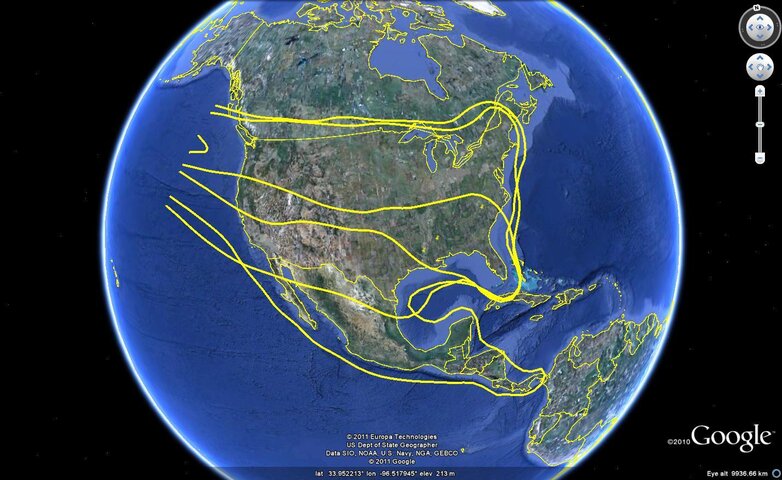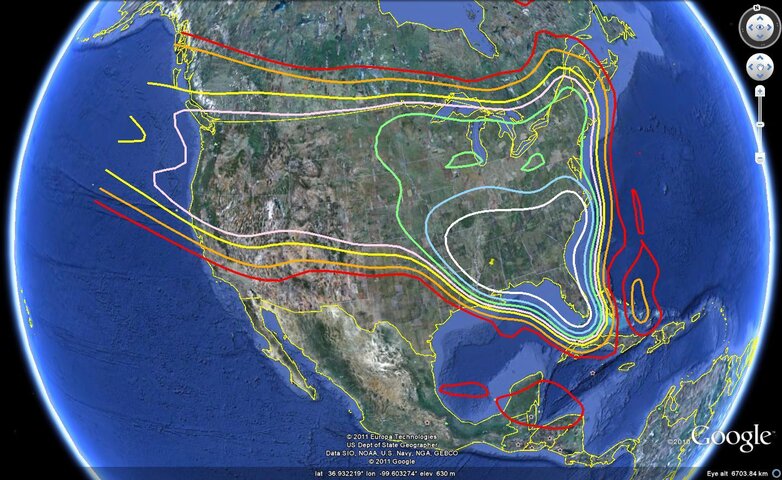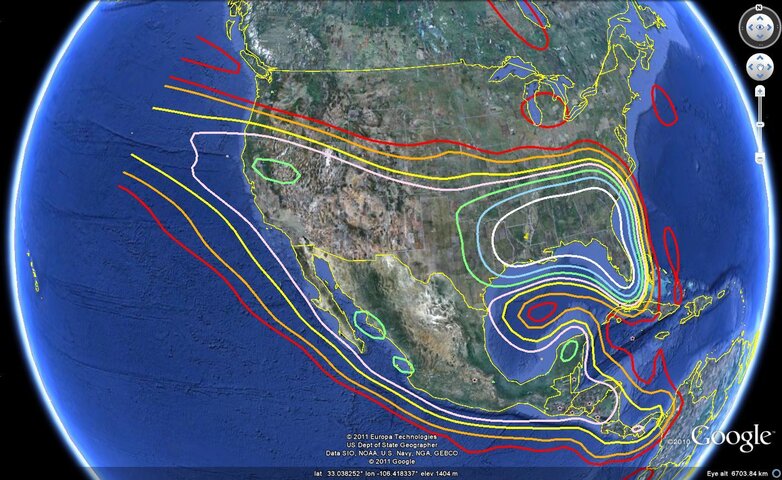Major changes in the EX-5 BSS 17/24 Ghz design.
Previous design was a conventional Conus beam supplemented by a steerable spot for Mexico City.
New Design has a Conus North Beam (Eastern US), a Conus South Beam ( Southeast US), a Conus Beam (Continental US), and 30 spot beams steerable as a group. The spot beam group includes Mexico City and Puerto Rico.
Very strong transmissions (several beams will be derated so as to not exceed FCC standards.
Operations will be in one of two modes.
All three Conus beams will operate simultaneously in the 17.3-17.7 Ghz band over twenty four, 26 Mhz channels or, the North and South Conus beams will opearte over six, 26 Mhz channels and each spot beam will use a 88 Mhz channel.
The Mexico City spot will use the 100 Mhz in the 17.7-17-8 Ghz range (US transmissions are prohibited in this range (reserved for fixed base operators in the US). Mexican transmissions are pending approval.
Probable use is listed as Video on Demand and Local into Local but is non-specific (see narrative for details).
Previous design was a conventional Conus beam supplemented by a steerable spot for Mexico City.
New Design has a Conus North Beam (Eastern US), a Conus South Beam ( Southeast US), a Conus Beam (Continental US), and 30 spot beams steerable as a group. The spot beam group includes Mexico City and Puerto Rico.
Very strong transmissions (several beams will be derated so as to not exceed FCC standards.
Operations will be in one of two modes.
All three Conus beams will operate simultaneously in the 17.3-17.7 Ghz band over twenty four, 26 Mhz channels or, the North and South Conus beams will opearte over six, 26 Mhz channels and each spot beam will use a 88 Mhz channel.
The Mexico City spot will use the 100 Mhz in the 17.7-17-8 Ghz range (US transmissions are prohibited in this range (reserved for fixed base operators in the US). Mexican transmissions are pending approval.
Probable use is listed as Video on Demand and Local into Local but is non-specific (see narrative for details).
Attachments
-
 EX-5 62.15W Plus 50 dBw Spot Contours.jpg264.3 KB · Views: 397
EX-5 62.15W Plus 50 dBw Spot Contours.jpg264.3 KB · Views: 397 -
 EX-5 62.15W Plus 50 dBw Composite Conus.jpg180.1 KB · Views: 376
EX-5 62.15W Plus 50 dBw Composite Conus.jpg180.1 KB · Views: 376 -
 EX-5 62.15W Conus North.jpg240.8 KB · Views: 385
EX-5 62.15W Conus North.jpg240.8 KB · Views: 385 -
 EX-5 62.15W Conus.jpg250.3 KB · Views: 332
EX-5 62.15W Conus.jpg250.3 KB · Views: 332 -
Ex-5 Narrative.pdf217.2 KB · Views: 404
-
 EX-5 62.15W Conus South.jpg245.8 KB · Views: 404
EX-5 62.15W Conus South.jpg245.8 KB · Views: 404

